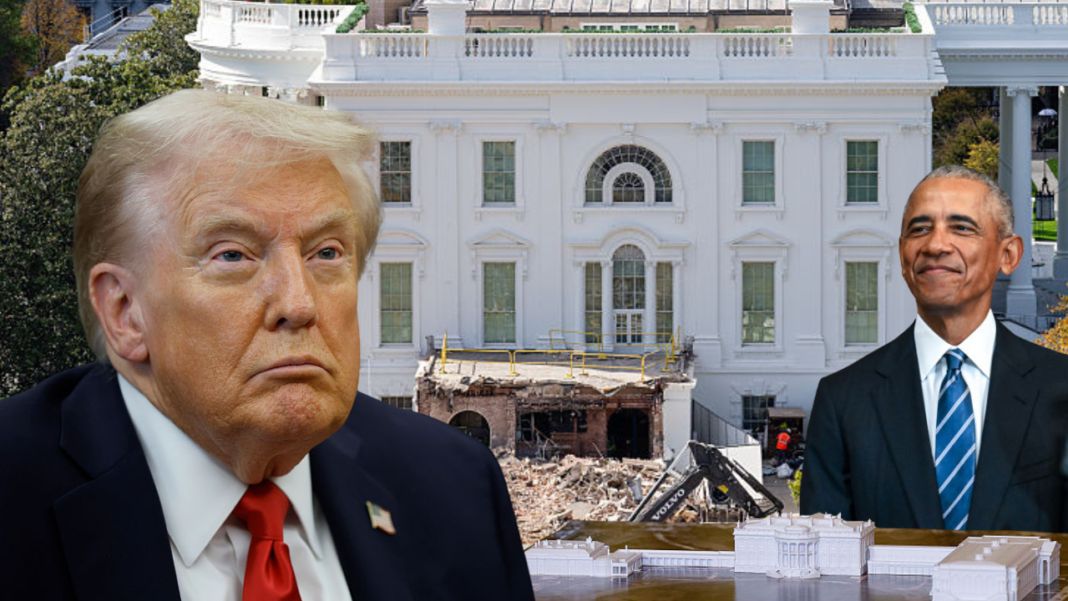The Trump Ballroom Controversy: A Political and Cultural Flashpoint
The $300 Million Ballroom
President Donald Trump’s ambitious plan to construct a $300 million ballroom at the White House has sparked considerable outrage and debate, particularly among Democrats. The ballroom, a lavish addition to the traditional framework of presidential institutions, has raised eyebrows not only for its financial scale but also for its implications regarding Trump’s intentions and legacy.
The Idea of Renaming
In the wake of the ballroom’s announcement, Democratic leaders have begun to advocate for a provocative solution: renaming it after America’s first Black president, Barack Obama. Arizona U.S. Senator Ruben Gallego ignited this conversation, humorously suggesting that such a move would “really mess with” Trump, asserting that calling it the “Barack Obama Ballroom” would address “half the problem.”
A Platform for Democrats
Following Gallego’s lead, news anchor and Zeteo founder Mehdi Hassan echoed similar sentiments, proposing that any Democratic candidate for the 2028 presidential elections should include renaming the ballroom as part of their campaign platform. Hassan remarked that this move would resonate with the Democratic base, interpreting it as a direct challenge to Trump’s identity, something that would “kill him.”
Trump’s Dismissive Response
According to ABC News, discussions among White House staff have suggested that Trump might name this grand ballroom after himself once it’s completed. However, Trump has dismissed these claims as “fake news.” This dismissal comes amid ongoing criticisms that the ballroom’s construction symbolically reflects Trump’s reluctance to leave office and continues to stoke conspiracy theories suggesting he may seek an unconstitutional third term.
A Backstory Rooted in Rivalry
Ironically, Trump’s aspiration for an opulent White House ballroom actually dates back to the Obama administration. During his 2016 presidential campaign, Trump claimed he reached out to David Axelrod, a senior advisor during Obama’s tenure, to propose building the ballroom “free of charge.” After not receiving a response, he expressed lingering irritation over the perceived slight, stating that a similar proposal would have cost about $100 million.
Opinions on What Should Happen Post-Trump
The ballroom has become a contentious topic, with opinions diverging sharply on its fate after Trump leaves office. Some critics, including U.S. Representative Eric Swalwell, have asserted that the ballroom should be torn down entirely once Trump is gone. Swalwell commented that any Democratic nominee who wishes to claim the presidency should pledge to demolish the ballroom on their first day in office.
Remnants of Trump’s Presidency
On the other hand, not everyone believes that tearing down the ballroom would be a prudent decision. Former Obama aide Dan Pfeiffer cautioned against such actions, arguing that doing so would not only mirror Trump’s audacious style but might alienate the public. He suggested that polls already indicate discontent over Trump’s decision to construct the ballroom, and argues the same would apply should a Democrat decide to obliterate it.
The Case for Renaming
Pfeiffer further supported Gallego’s proposal for renaming the ballroom instead of demolishing it. He contended that this would be a subtler yet potent blow to Trump’s ego. Allowing Trump to witness his political foes celebrating in a space named after Obama—someone he has consistently derided—would deliver a sharp emotional jolt without the logistical and political ramifications of destruction.
Cultural Significance
This entire saga is an illuminating case study on how political symbolism can influence public sentiment. The prospect of renaming the ballroom highlights not just the ongoing political battles but also the cultural implications of Trump’s presidency and its legacy. It raises questions about how future administrations will reckon with the marks left by their predecessors.
In conclusion, the conversation surrounding the Trump ballroom merges financial implications, political maneuvering, and cultural significance, reflecting a microcosm of the broader climate of American politics today. Whether it remains a towering symbol of Trump’s reign or evolves into a testament to the resilience of subsequent leaders remains a story that is still unfolding.



